In stock today. Ships from California


17,000+ 5-star reviews
The Ultimate
Wrinkle Treatment
Fight Aging Skin, Day and Night
Address fine lines and wrinkles with our Award-Winning Glow Maker, Peptide Squad, and Moonlight serums, and Night Renewer night cream for the ultimate daily spa treatment.
Dermatologist-Approved & Recommended

100-Day Money Back Guarantee

Free Shipping









Trusted by 500,000+ customers
Dermatologist Recommended
A look inside the kit
Featuring award-winning products and dermatologist-recommended ingredients for youthful, radiant skin
GLOW MAKER VITAMIN C SERUM
The Strategist Beauty 100 Award
An antioxidant blend of 15% vitamin C (l-ascorbic acid), vitamin E, and ferulic acid that defends against environmental damage while brightening skin.

Hydrates & stimulates collagen production

Fades dark spots & hyperpigmentation

Protects from free radical & UV damage

Brightens your skin


Peptide Squad Collagen Renewal Serum
Cosmopolitan Clean Beauty Award
The only serum on the market featuring all four classes of peptides (Copper tripeptide-1 (GHK-Cu) Matrixyl 3000 Argireline Rice peptides), uniquely designed to combat signs of aging from every angle.

Boosts collagen production

Reduces fine lines and wrinkles

Firms up skin

Soothing, deep hydration
MOONLIGHT ADVANCED RETINAL NIGHT SERUM
The Zoe Report's Beauty Award
With 0.11% retinal (more potent than retinol, but less irritating), this multifunctional night serum combats wrinkles, boosts collagen, and evens out skin tone.

10 times more effective than retinol

Nourishes your skin & helps fight acne

Less irritation and redness than tretinoin

Minimizes fine lines & wrinkles


NIGHT RENEWER GLYCOLIC ACID CREAM
Prevention Healthy Skin Award
Described as an “at-home facial in a jar", this night cream features 10% glycolic acid to promote cell turnover and smooth skin texture.

Maintains proper skin hydration

Improves skin texture & fades dark spots

Diminishes the appearance of wrinkles & pores

Smoother skin from the first night

100-Day Money Back Guarantee

Free Shipping & Returns
Multi Award Winning
Maelove products are recognized by world leading publications as being best in class




Customer Before and Afters
Actual customer submitted images
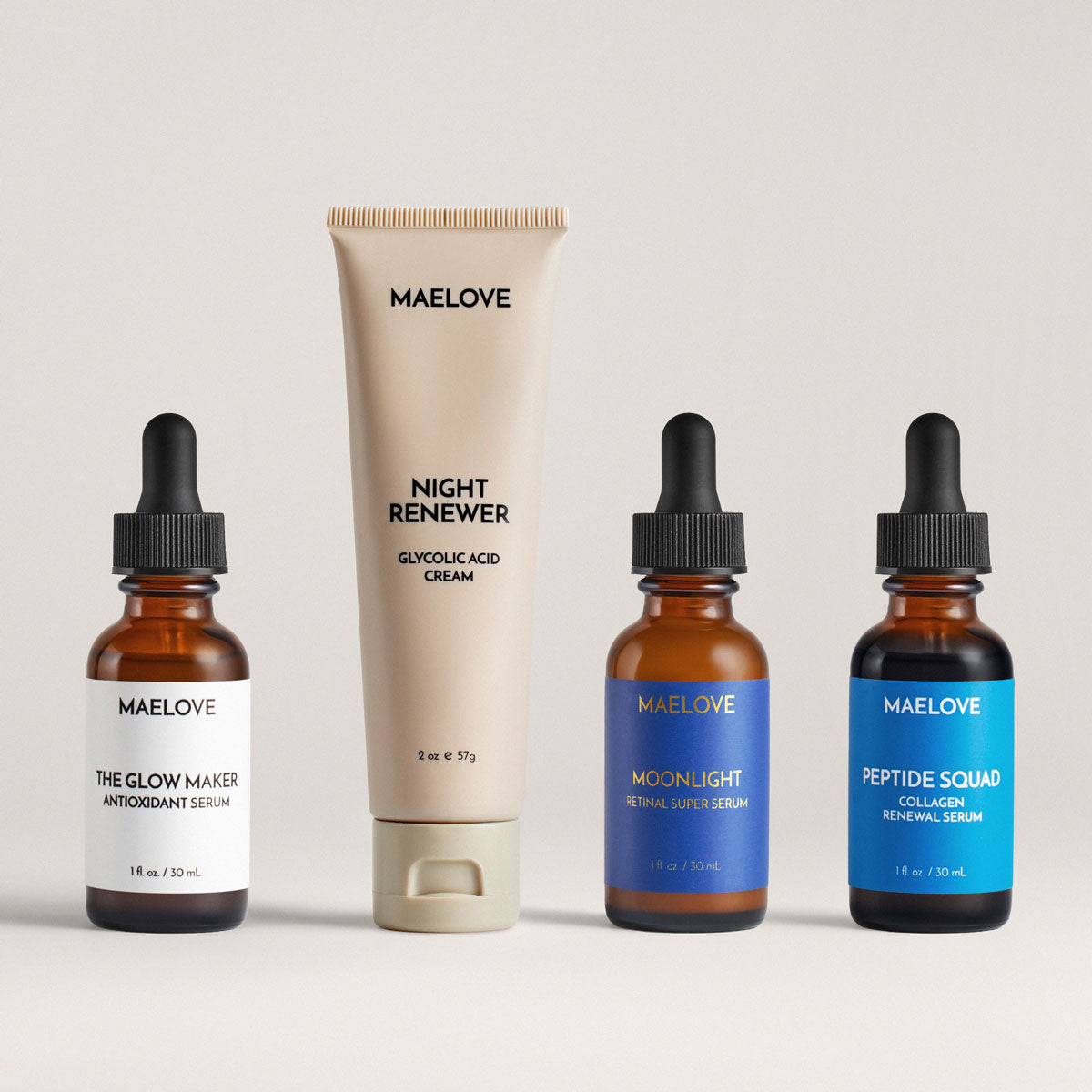
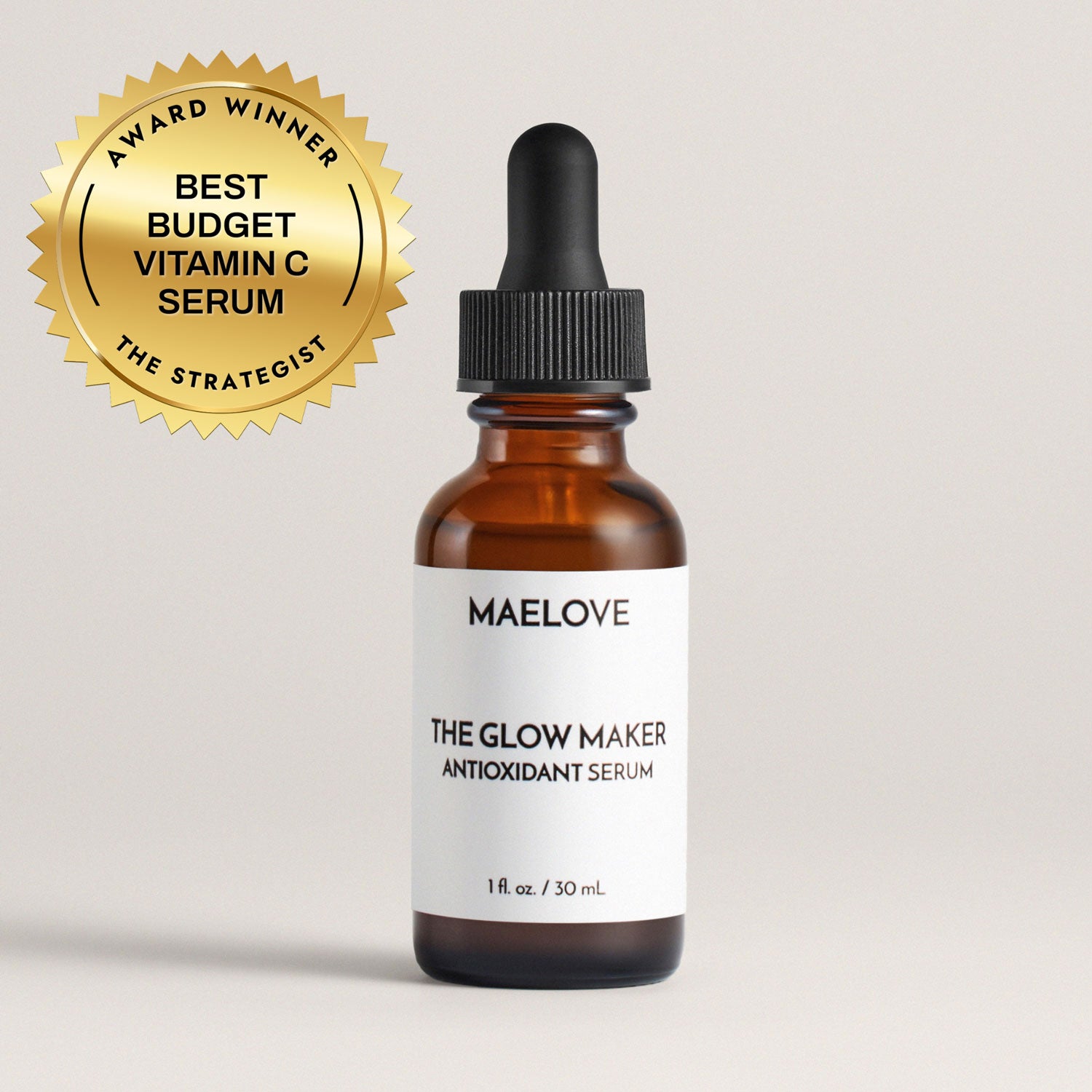
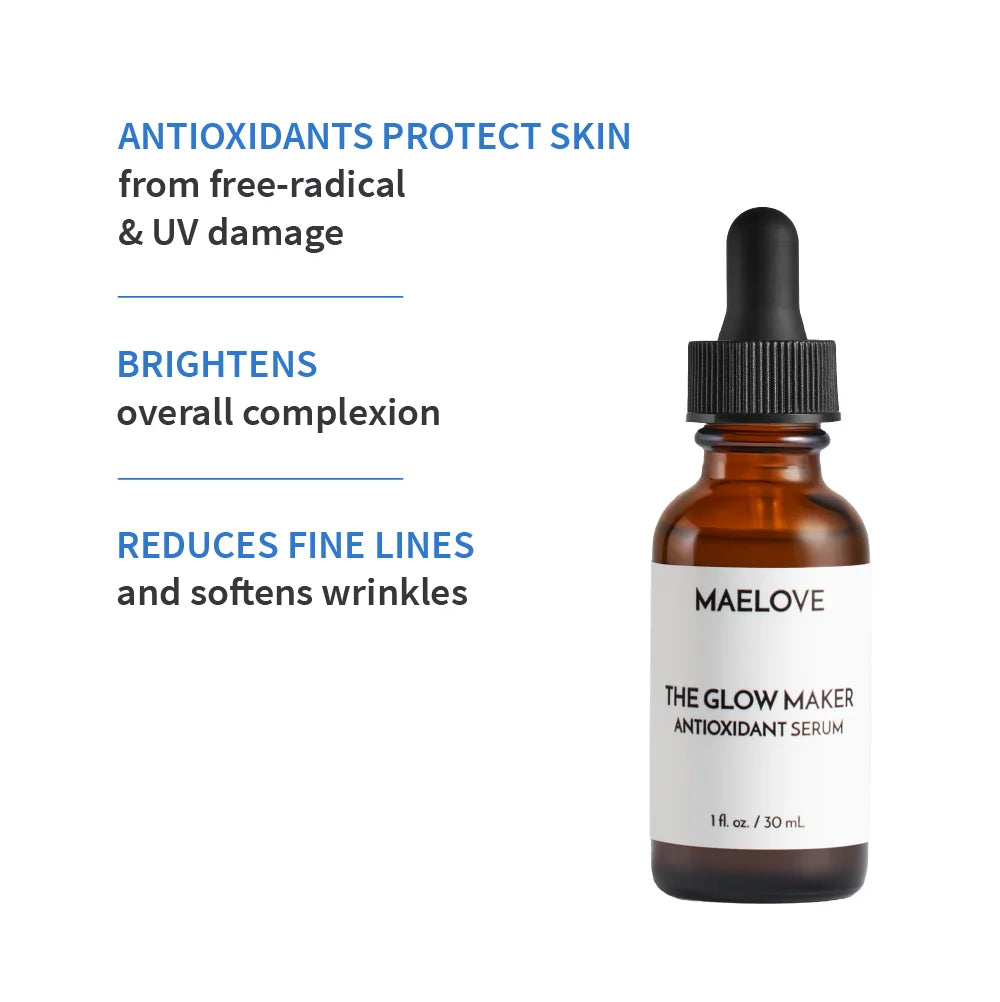
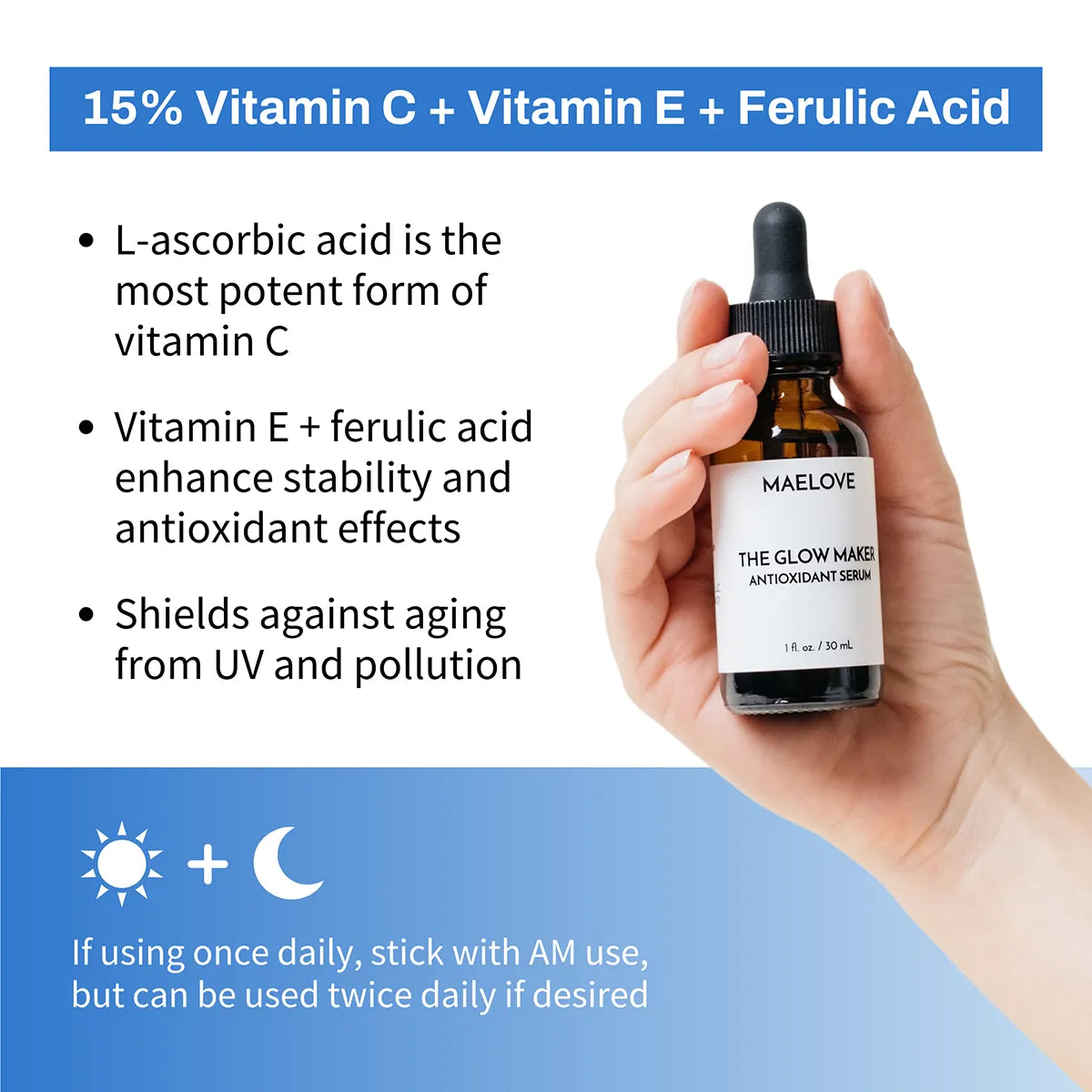
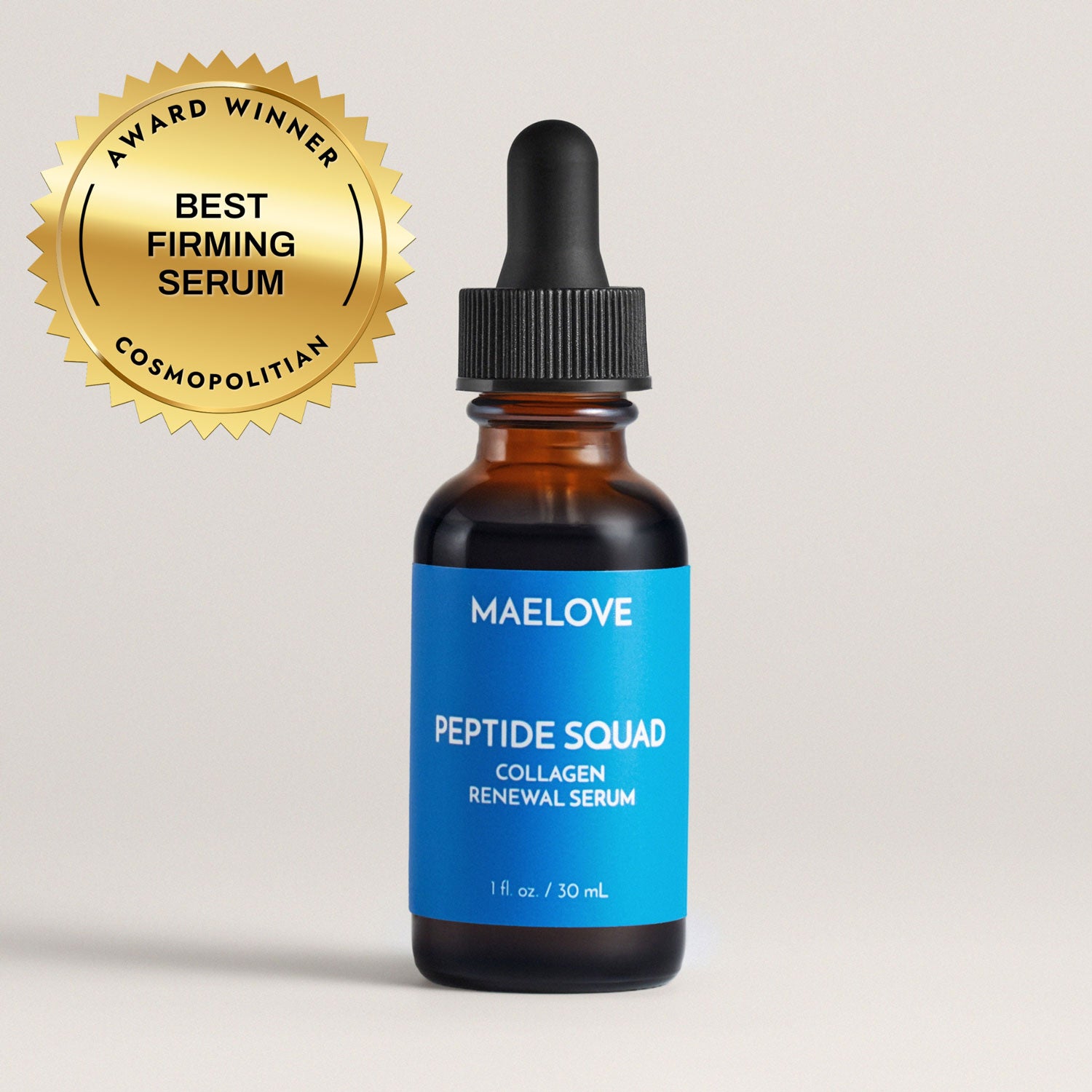
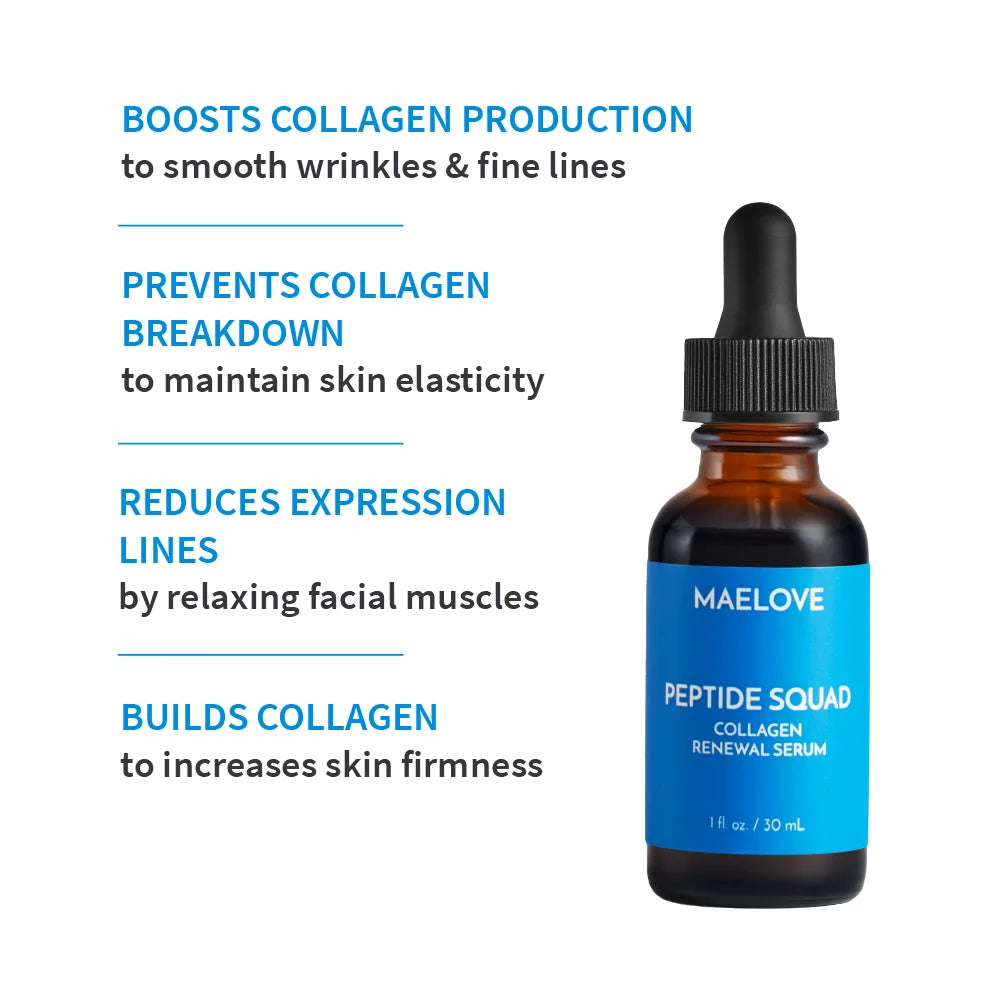
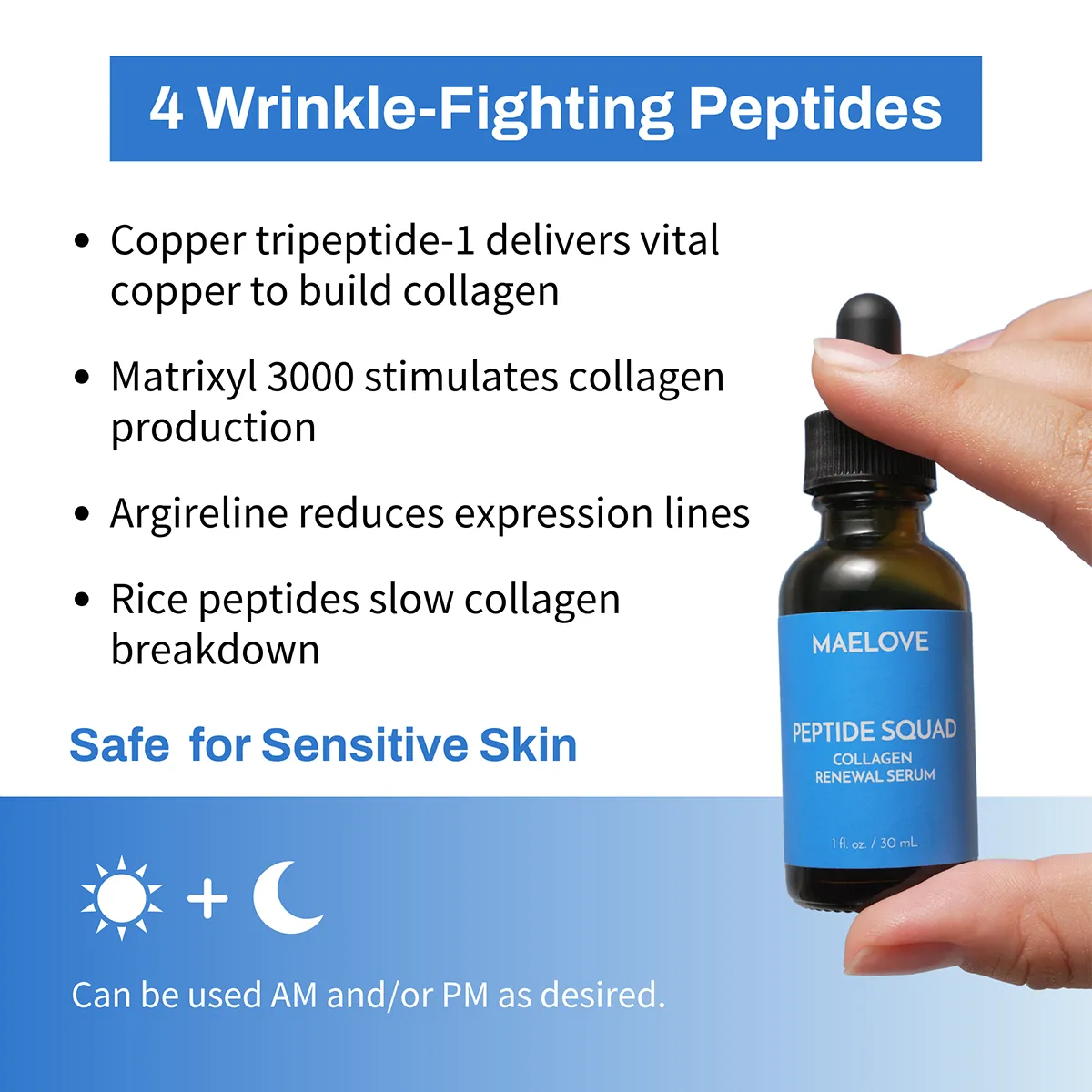
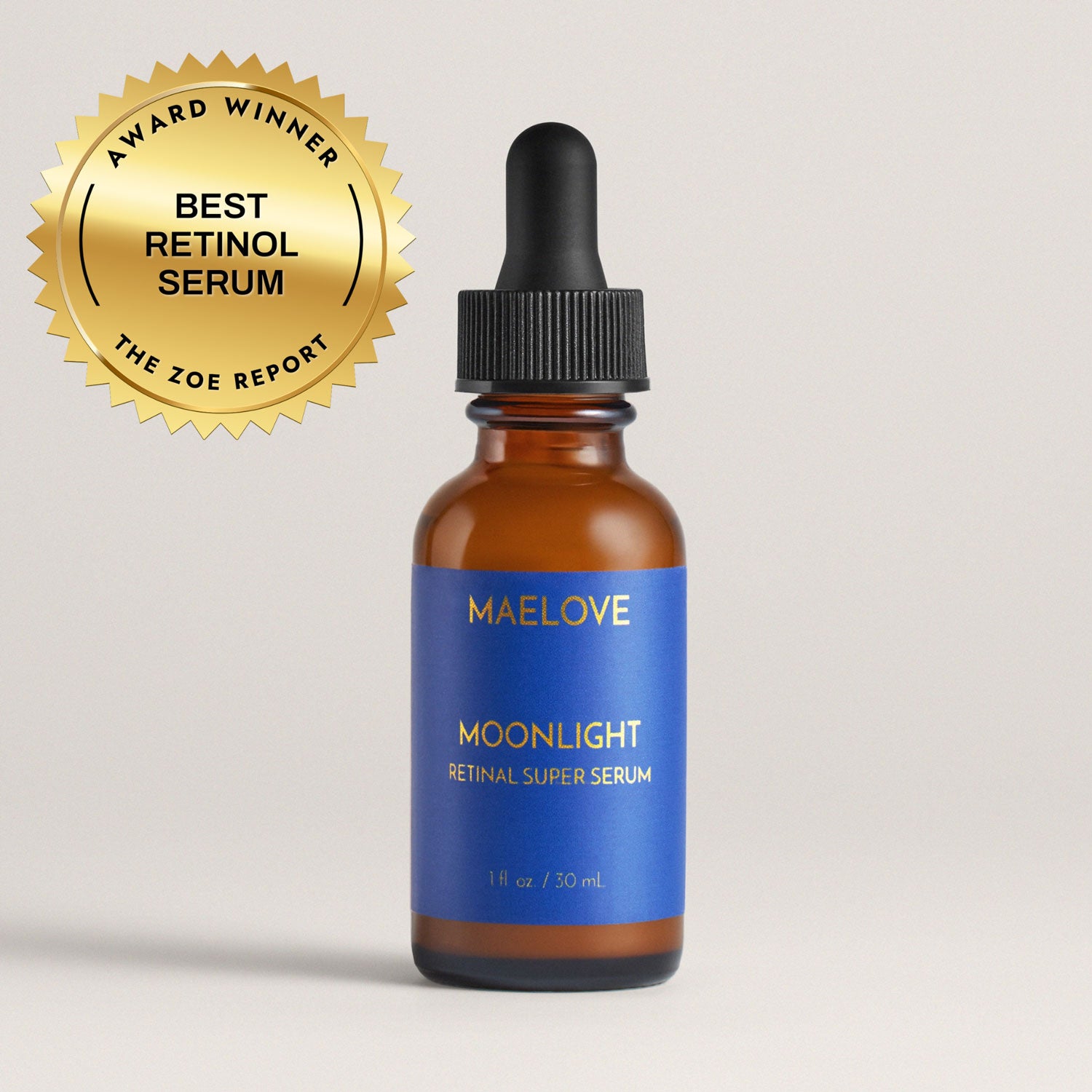
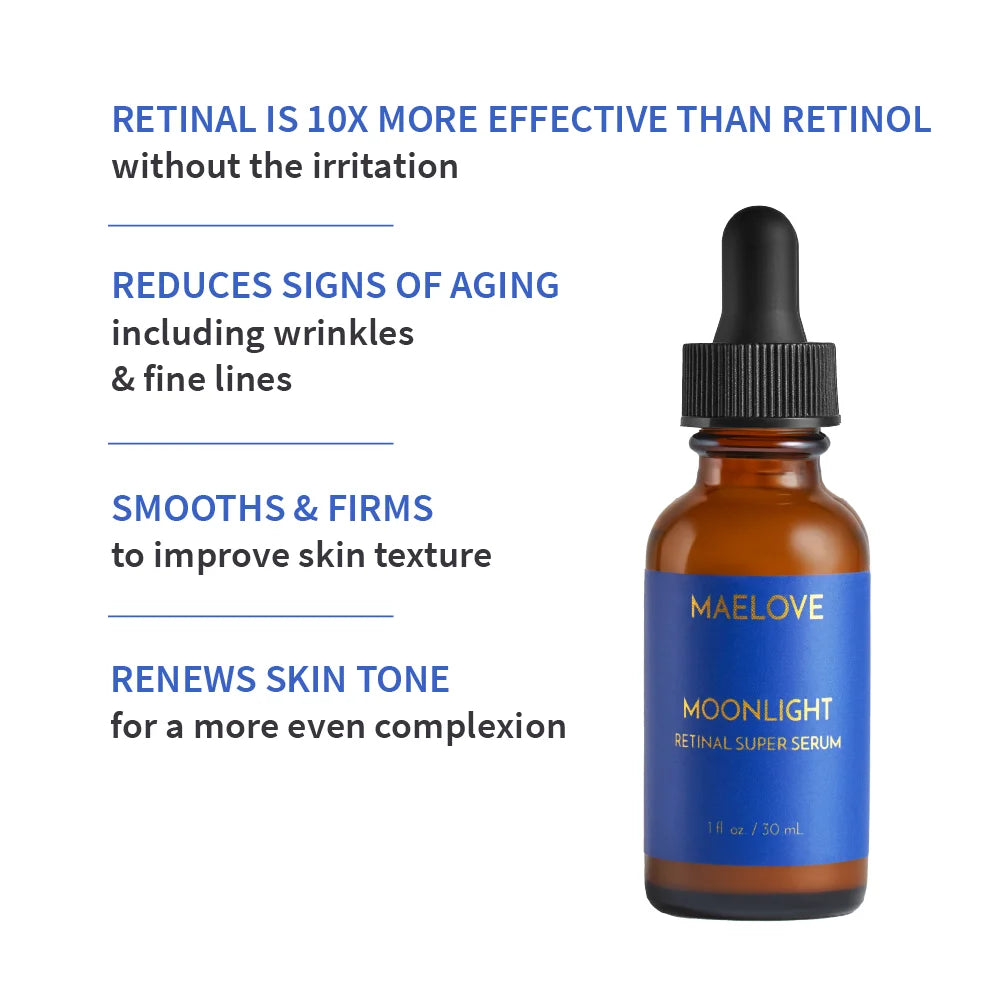
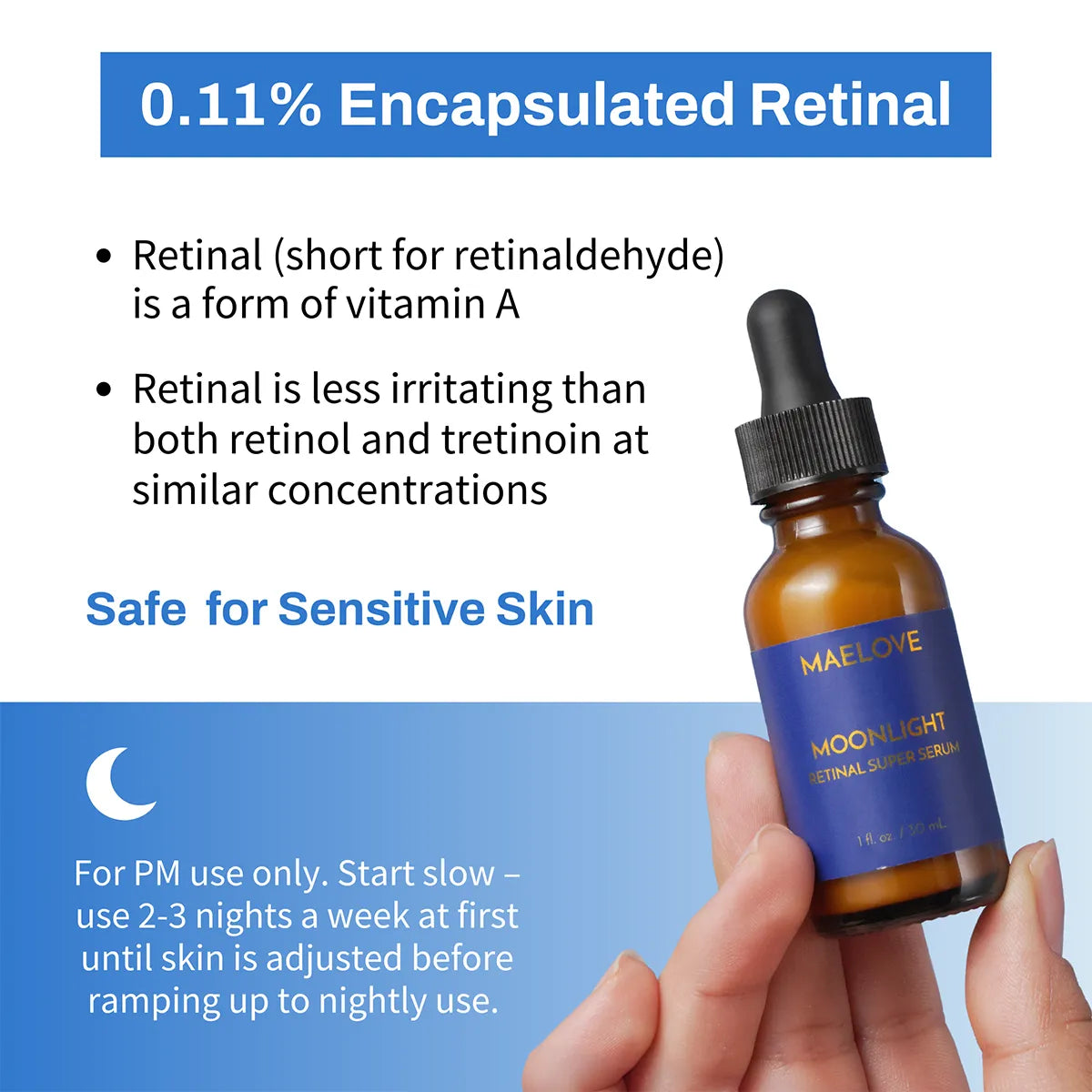
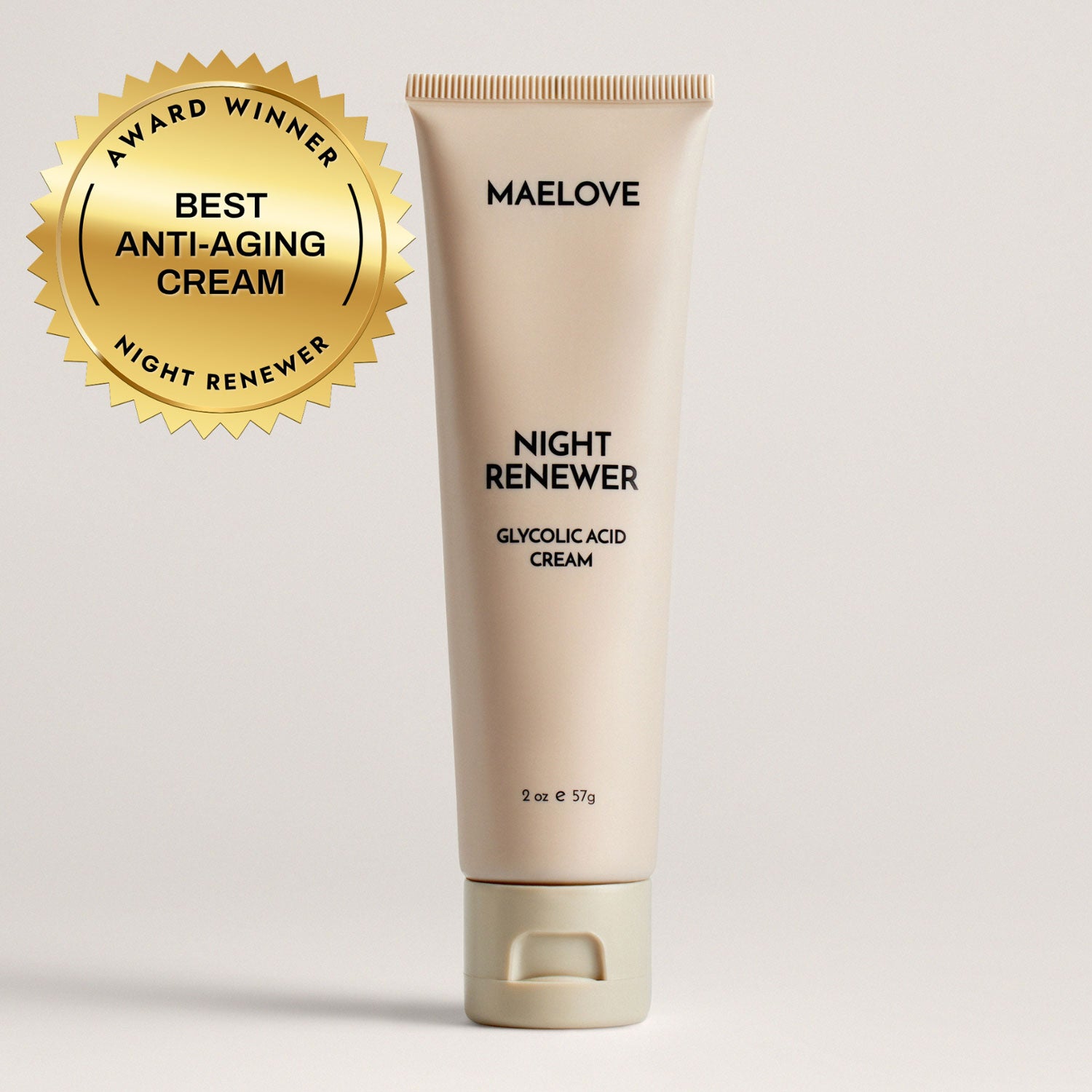
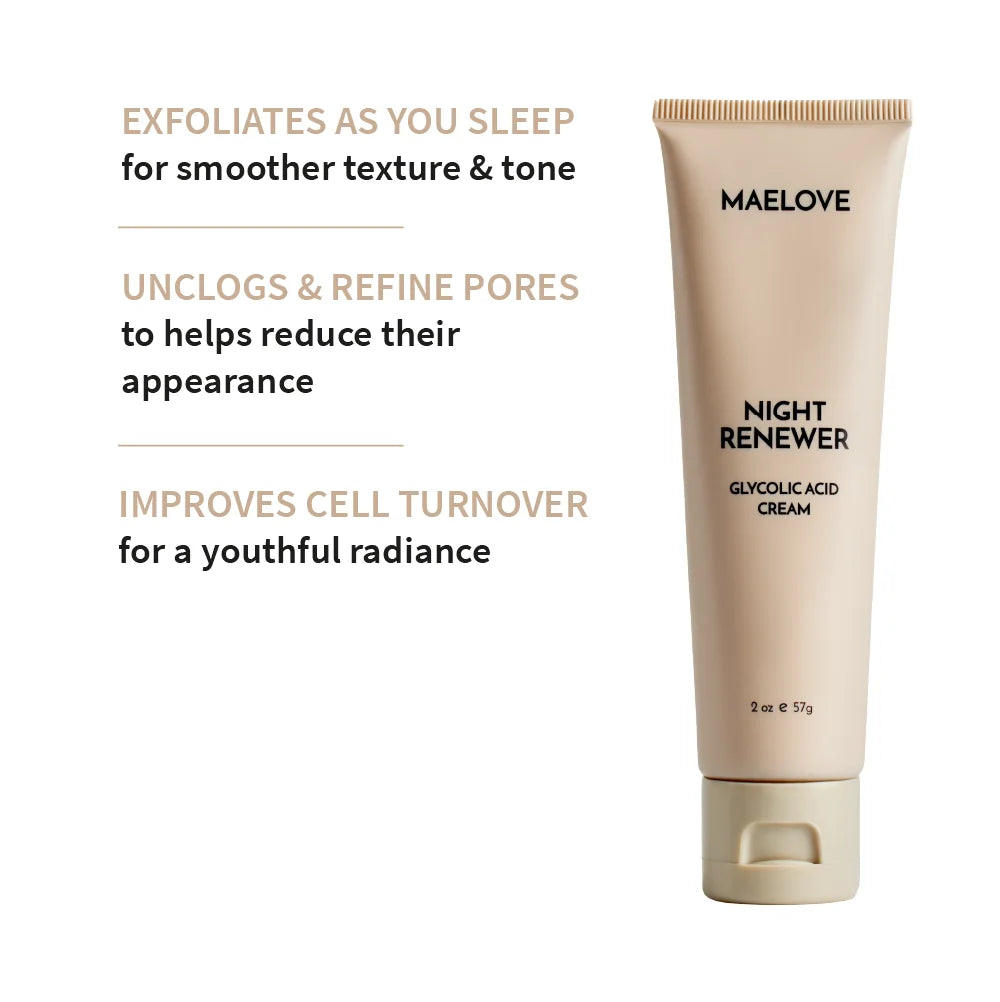
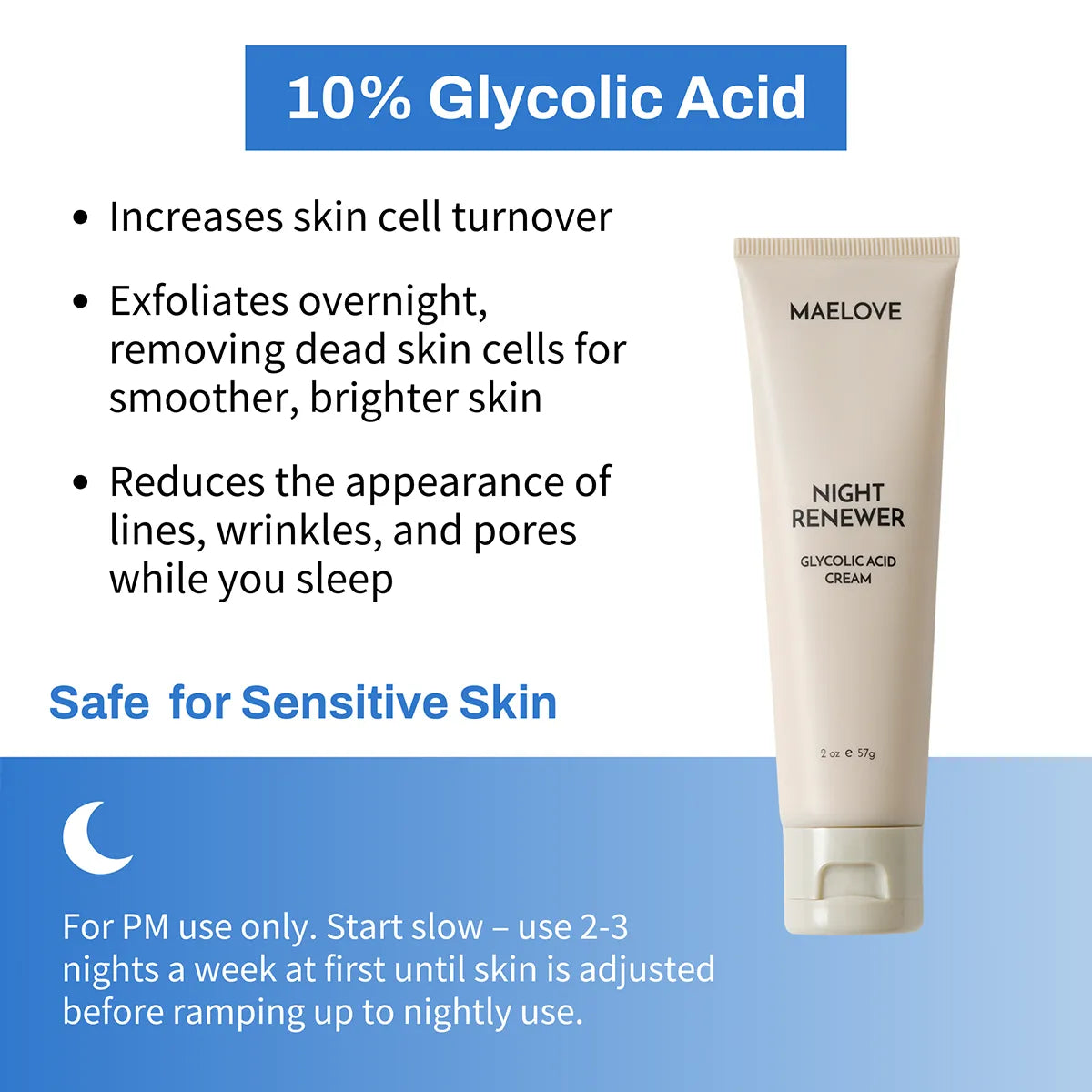
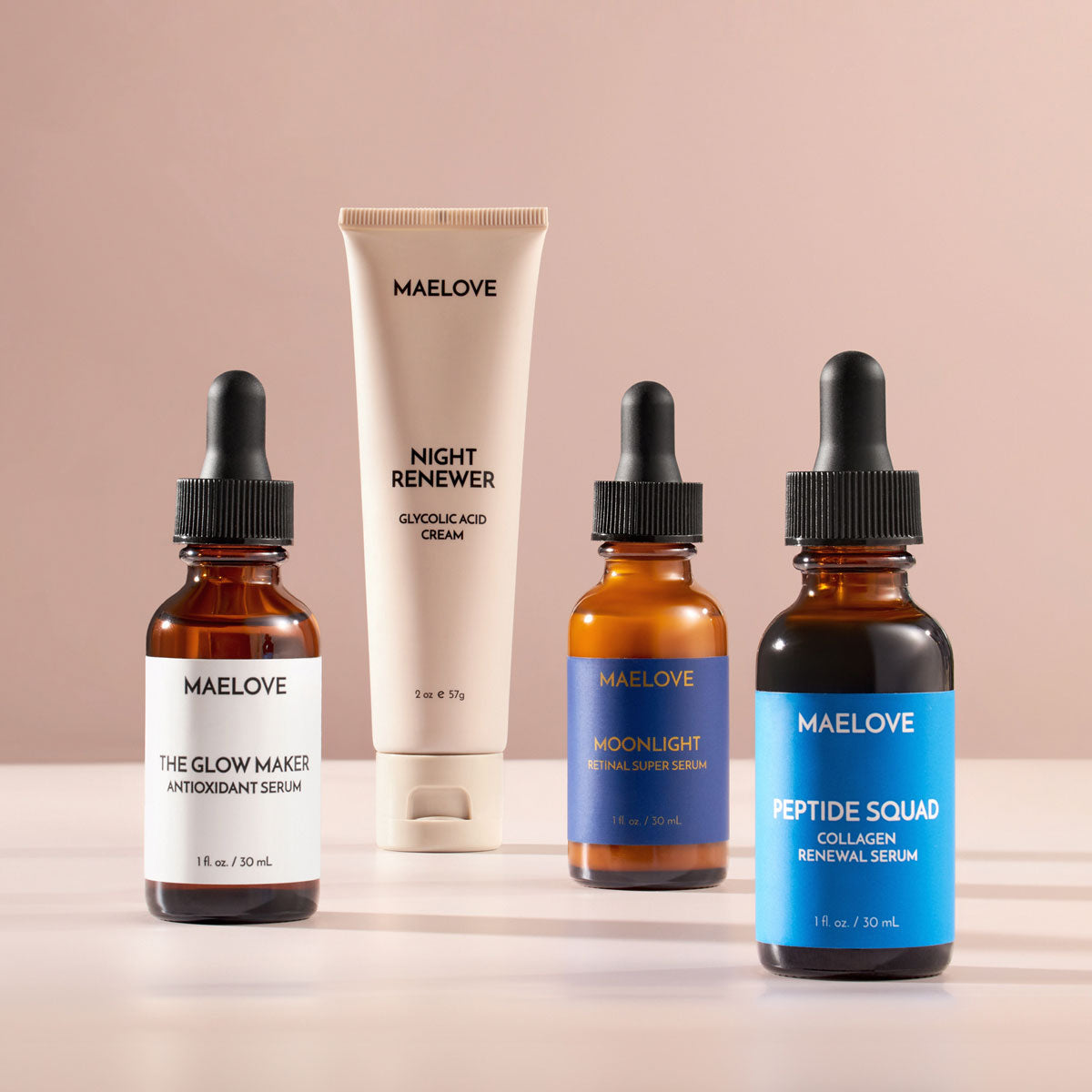

Recommended by doctors
"I review a lot of different vitamin C serums, but Glow Maker has always stuck out as one of my favorites. I've been using it for over 2 years."
Dr. Daniel Sugai
Board-Certified Dermatologist
4.6 Based on 20,600+ Reviews
intensive wrinkle treatment
Glow Maker
Fades dark spots
Hydrates
Brightens the skin
Peptide Squad
Boosts collagen production
Reduces fine lines and wrinkles
Firms skin
Moonlight
Minimizes wrinkles
Nourishes the skin
Reduces redness
Night Renewer
Maintains hydration
Reduces fine lines
Smoothes the skin
Subscribe & Save
Save $30
$123.04
Delivery every
"Jackie's Family Circle" membership
Modify your bundle before each shipment
Free shipping on every shipment
No obligation: reschedule or cancel any time
Reminder sent 1 week before each shipment
Free Shipping in US and Canada
One-time purchase

100-Day Guarantee with free return shipping
Free shipping + Free Returns
We firmly stand behind the efficacy of our products, which is why we back them with an industry-leading 100-day Money Back Guarantee.
If you're not 100% happy, return the products within 100 days for a full refund. We even cover the return shipping. It's our commitment to ensuring you're completely satisfied with your Maelove journey.

Cruelty free and vegan

Paraben, SLS, dyes and fragrance free

Researched & formulated in the USA
The Highest Standard in Customer Care
Industry Leading
100-Day Money-back Guarantee
If for any reason you don't love our products, we'll happily refund your order within 100 days of purchase and even pay for the return shipping. Our unwavering commitment to your satisfaction is core to Maelove and speaks to the quality of our products and customer care.
Scientifically Proven Most Effective Ingredients

Vitamins C (15% L-ascorbic acid), E and Ferulic Acid for superb antioxidant protection. Hyaluronic Acid for long-lasting hydration. A proprietary botanical blend (Vitis Vinifera, Aloe, Aurantium Dulcis and Magnolia) for extra nourishment and easy makeup application.
Key Ingredients
Vitamin C, Vitamin E, Ferulic Acid
Supporting Ingredients
Hyaluronic Acid, Vitis Vinifera, Aloe, Aurantium Dulcis and Magnolia.
See FAQ for the full ingredients list
1.0 fl oz / 30 ml
Backed by 20,600+ Customer Reviews
How to use
Use the Glow Maker daily in the morning after cleansing. Moonlight and Night Renewer should only be used in the evening. Start slow by using each product 2-3 nights a week on alternating nights.
1
Cleanse skin and pat dry.
2
Apply a thin layer of Glow Maker serum on the face, neck and décolletage. Gently massage in.
3
Apply a thin layer of Peptide Squad serum on the face, neck and décolletage. Gently massage in.
Top it off with a simple moisturizer to lock in the goodness (and don’t forget sunscreen).
NIGHTTIME - REPAIR SKIN
1
Cleanse skin and pat dry. Then rotate 2A and 2B every other night for a month:
2a
Apply a thin layer of Moonlight serum on face and neck. Follow up with a simple moisturizer to lock in the serum.
2b
Apply a thin layer of Night Renewer cream on face and neck. A separate moisturizer is not needed.
*If your skin is feeling fine after a month, try layering Moonlight Serum with Night Renewer Cream on a nightly basis.

100-Day Money Back Guarantee

Free Shipping & Returns

Obsessively Formulated for all skin types
Frequently Asked Questions
ARE GLOW MAKER, MOONLIGHT RETINAL AND NIGHT RENEWER SAFE FOR PREGNANCY AND BREASTFEEDING?
Glow Maker, Peptide Squad and Night Renewer are both safe to use during pregnancy and nursing.
Moonlight should NOT be used during pregnancy and/or nursing. However, it is always a good idea to consult with your doctor and follow their protocol.
What is the scientific evidence that Vitamin C help build collagen and fight wrinkles?
Vitamin C is necessary in collagen production and topical Vitamin C has been scientifically proven to boost collagen production in aged skin (Nusgens et al. 2001). The collagen content in skin decreases over time – roughly 1% per year with accelerated loss post-menopause – leading to wrinkles and sagging as we get older. UV damage accelerates this process in photoaged skin.
The ability of topical Vitamin C to boost collagen production has been demonstrated in placebo-controlled trials of aged skin in postmenopausal women (Nusgens et al. 2001) and in those with photoaged skin (Traikovitch 1999). Note that the role of Vitamin C in collagen production is also responsible for its beneficial role in wound healing and for the skin symptoms of scurvy which results from Vitamin C deficiency (Pullar et al. 2017).
How does Vitamin C brighten and even out my skin tone?
Another benefit of Vitamin C is that it can brighten and even out your skin tone by treating hyperpigmentation. This is not only because Vitamin C can fight UV damage which is a main cause of hyperpigmentation, but also because it can inhibit an enzyme (tyrosinase) involved in skin pigment production. A concentration of at least 10% Ascorbic acid is recommended to get maximal benefits against UV induced hyperpigmentation (DeDormeal et al. 2019).
Why does the Glow Maker use 15% L-ascorbic Acid (Vitamin C)?
L-Ascorbic Acid, also known as Vitamin C, is one of nature’s best antioxidants and indeed, one of the primary defenses against UV damage employed by the skin. Special receptors in the skin pull Vitamin C out of your bloodstream to pack your skin full of this protective antioxidant which is also the most plentiful antioxidant in the skin (Pullar et al. 2017). The number one cause of premature aging of the skin is UV damage from the sun’s rays. When your skin is exposed to UV rays, free radicals are spawned. These free radicals are like ricocheting bullets tearing up collagen and even DNA leading to photoaged skin and skin cancers. Fine lines and wrinkles, sunspots, ruptured blood vessels, enlarged pores, and rough coarse skin are some of the features of photoaged skin.
While Vitamin C in your skin plays a crucial role, unfortunately, like so many processes that occur with general aging, the Vitamin C content in your skin wanes as you age irrespective of diet, as poor blood flow and nutrient delivery start to affect levels. In other words, your natural defenses against UV damage go down with aging. This is where topical supplementation can remedy the situation as the skin absorbs the Vitamin C applied at the skin’s surface (Pullar et al. 2017).
Scientific studies show that the skin will absorb (L-Ascorbic Acid) optimally from a serum when the concentration is between 10-20% Ascorbic Acid. At these concentrations, it reaches saturation after 3 days of consistent daily application (Pinnel et al. 2001). Other derivatives of Vitamin C may be used in Vitamin C serums but in this case, they must be converted into L-Ascorbic Acid inside your skin in order to have positive effects and studies do not necessarily show that this conversion occurs. L-Ascorbic Acid is the form of Vitamin C that has been scientifically studied and clinically proven.
What are the benefits of the class known as signal peptides and specifically Matrixyl 3000?
Signal peptides are also known as Matricin or Matrikine peptides and specifically refer to collagen or extracellular matrix (ECM) fragments which improve wrinkles and skin hydration by signaling fibroblasts to increase the production of collagen, elastin, glycosaminoglycans (GAGs) such as hyaluronic acid, and other components of the ECM including proteoglycans, fibronectin and laminin (Errante et al. 2020, Gorouhi and Maibach 2009).
Matrixyl 3000 is a patented combination of two signal peptides (pal-GHK and pal-GQPR, aka palmitoyl tripeptide-7 and palmitoyl tripeptide-1) which have known synergy with one another as first demonstrated in in-vitro studies with dermal fibroblasts (fibroblasts secrete collagen, elastin, and other ECM components in the dermal layer of the skin) (US patent 2004/0132667 A1). In these studies, the combination of pal-GHK and pal-GQPR was more effective at stimulating collagen type 1, fibronectin and hyaluronic acid than either peptide alone.
Subsequent placebo controlled clinical studies in both men and women showed that a cream containing Matrixyl 3000 significantly decreased wrinkle depth and volume as well as skin roughness. In the first clinical study in older women, Matrixyl 3000 cream was applied on half the face versus placebo on the other half for crow’s feet wrinkles. With Matrixyl 3000, they found a significant 23.3% decrease in wrinkle volume, a 19.9% decrease in wrinkle depth and 16% decrease in roughness compared to baseline but no benefit with placebo. In the second clinical study in older men, Matrixyl 3000 cream gel was applied on half the face versus placebo on the other half on crow’s feet wrinkles. With Matrixyl 3000, they found a significant 17.1% decrease in wrinkle volume and 10.2% decrease in wrinkle depth and 8.4% decrease in roughness compared to baseline but no benefit with placebo (Sederma Matrixyl 3000).
A final clinical study was conducted to image changes of the papillary dermis. As described in a follow-up US patent 2012/164488, Sederma conducted a double-blind, placebo-controlled clinical study in 28 women who applied Matrixyl 3000 on half the face and placebo on the other half for 2 months and found an improvement in dermal density and reduced fragmentation in the collagen fibers of the dermis with Matrixyl 3000 compared to placebo (Sederma Matrixyl 3000).
On their own, pal-GHK and pal-GQPR also represent two of the best studied signal peptides. As characteristic of signal peptides, GHK and GQPR are fragments of proteins found naturally in the human body that are involved in ECM remodeling particularly during wound healing. GHK is a fragment of the alpha 2 chain of type I collagen while GQPR is a fragment of immunoglobin G. By linking each of these peptides to a palmitoyl group (and hence the pal-), these peptides become lipophilic. In other words, being lipophilic, they can cross the stratum corneum, the waterproof outer layer of the skin barrier, and can be absorbed into the deeper layers of the skin where they have their action.
GHK was first isolated from human plasma in 1973 (Pickart and Thaler 1973) and its wound repair properties were first observed in 1985 by Maquart and colleagues who found GHK was a potent activator of ECM synthesis and remodeling (Maquart et al. 1999). GHK has been found since then to have multiple biological actions improving tissue repair in skin, lung connective tissue, boney tissue, liver, and stomach lining. It has a wide range of effects on gene expression (Pickart and Margolina 2018). When damage activates proteolytic enzymes, GHK is released into the site of injury. GHK can stimulate skin dermal fibroblasts to produce growth factors and increase collagen synthesis and epidermal basal cells increasing integrins and p63 expression (Pickart and Margolina 2018, Lintner 2002).
GHK content is highest in the young with plasma levels at about ~200ng/ml at age 20 which declines to ~80ng/ml at age 60. This natural decline with aging may in part explain why adding peptides back to the skin can reverse signs of aging. GHK has been used in anti-aging and cosmetic products in humans for decades without any adverse effects and so has an established safety record (Pickart and Margolina 2018). Even without co-formulation with pal-GQPR, pal-GHK can increase collagen and GAG synthesis as well as improve collagen repair (Sederma Matrixyl 3000).
There is some misinformation on the web that states signal peptides such as GHK that are involved in wound healing have negative effects such as increasing inflammation because they mimic wounds. This is untrue as GHK has proven anti-inflammatory and antioxidant activity. GHK has anti-inflammatory benefits by reducing TNF-alpha induced secretion of proinflammatory cytokine IL-6 in dermal fibroblasts, and GHK is an efficient antioxidant, inactivating damaging free radical by-products of lipid peroxidation (Pickart et al. 2015, Pickart and Margolina 2018).
Pal-GQPR has also been studied and used separately from pal-GHK for many years in both skin and eye creams. GQPR is a fragment of immunoglobin G which is immunomodulatory. As skin ages, there is an increase in inflammatory cytokine IL-6, which may contribute to chronic inflammation in the aging process. The putative mechanism by which Pal-GQPR works is by reducing IL-6 secretion by keratinocytes. However, like GHK, GQPR changes the expression of multiple genes and so it has a broad effect on fibroblast activity that goes beyond anti-inflammatory action. Studies by Sederma show that pal-GQPR and pal-GHK activate complementary genes explaining the synergy between the two peptides (Sederma Matrixyl 3000).
What are the benefits of the class known as neurotransmitter inhibiting peptides and specifically Argireline?
Neurotransmitter inhibiting peptides are sometimes informally called “botox-like” or a botox alternative, though this descriptor is disliked by dermatologists. Nonetheless, the principles behind these peptides are similar to that of botox in that they aim to act on the cholinergic neuromuscular junction to inhibit muscle activity and in this manner, limit wrinkle formation. For neurotransmitter acetylcholine to be released, a reaction cascade mediated by SNAP receptor proteins and SNARE complex formation is necessary. SNAP-25 specifically is targeted by both botulinum neurotoxin type A (botox) and the peptide included here, ArgirelineR. ArgirelineR competes with the SNARE complex by mimicking the N terminal end of SNAP-25 – hence preventing formation of the SNARE protein complex and inhibiting acetylcholine release and subsequent muscle contraction (Lipotec Argireline).
Argireline (also known as acetyl hexapeptide-8 or acetyl hexapeptide-3) has been shown to have an anti-wrinkle effect (Blanes-Mira et al. 2002, Draelos et al 2016). It has lower efficacy than botox itself but is a safe, non-toxic alternative (Blanes-Mira et al. 2002). Published clinical studies show its anti-wrinkle efficacy whether formulated alone (Blanes-Mira et al. 2002, Tadini et al. 2015) or in a mix of peptides (Draelos et al. 2016, Errante et al. 2020). Interestingly, a double-blind study using topical Argireline cream in patients receiving botox treatment for blepharospasm saw an extension of botox benefits to symptom control when using the cream, suggesting topical Argireline can also increase the length of botox benefits (Lungu et al. 2013). Clinical studies conducted by the manufacturer also demonstrate reduced eye wrinkle depth and volume with usage of Argireline creams (Lipotec Argireline).
What are the benefits of carrier peptides and specifically copper tripeptide-1?
Carrier peptides are believed to improve wrinkling and skin elasticity by delivering trace elements such as copper and manganese that can function as cofactors necessary for collagen and elastin production (Errante et al. 2020). In this class, the clear standout is Cu-GHK also known as copper tripeptide-1, which is by far the best studied and most established carrier peptide.
Dr. Loren Pickart in 1973 was the first to propose that signal peptide GHK could act as a carrier for copper, as GHK could complex with Cu(II) spontaneously. Cu-GHK is naturally released during wound healing to support healing after damage. Cu-GHK proposed function is as an activator of tissue remodeling. Specifically, it supports breakdown of scar tissue and promotes collagen synthesis, elastin, proteoglycan and GAG production as well as antioxidant and anti-inflammatory responses (Gorouhi and Maibach 2009).
Cu-GHK may serve as a natural built-in modulator of dermal repair. However, the levels decrease with age and youthful behavior of cells is restored when it is added back in. Serine proteases from bacteria can also break Cu-GHK down and so overwhelming these proteases with peptides can help overcome them. Further, Cu-GHK can cross the stratum corneum in sufficient quantities (Pickart et al. 2015).
Cu-GHK is a well-studied peptide including in vitro studies and several clinical trials with direct comparisons to control vehicles, other peptides, Vitamin C and retinoids. In in-vitro studies, even very small concentrations of Cu-GHK were found to stimulate increases in collagen and elastin and increase tissue inhibitors of metalloproteinases (TIMP) which inhibit collagen and elastin breakdown by metalloproteinases (MMPs) (Badenhorst et al. 2016). Furthermore, in a clinical study, application of a cream with GHK-Cu significantly reduced wrinkle volume by 55.8% more than a vehicle alone after 8 weeks in 40-65 yo women (Badenhorst et al. 2016).
In a head-to-head comparison study with tretinoin, Vitamin C, melatonin, and Cu-GHK though no significant differences were found due to only ten subjects being enrolled, increased pro-collagen synthesis was found for 4/10, 5/10, 5/10, and 7/10 of patients respectively suggesting more patients responded to Cu-GHK than other collagen increasing compounds (Abdulghani et al 1998). In another double-blind comparison with 0.075% retinol, compatible improvements were found in wrinkling and overall photodamage with Cu-GHK cream, and significantly greater improvements for both compared to placebo (Leydon et al. 2002).
What are the benefits of the class known as enzyme inhibitor peptides and specifically rice peptides?
Enzyme inhibitor peptides directly or indirectly suppress enzymes that breakdown collagen, elastin, GAGs and other ECM components, and specifically, inhibit matrix metalloproteinases (MMPs). These include rice and soybean peptides which can inhibit serine proteases such as MMPs (Schagen 2017, Ferreira 2020). Rice peptides inhibit MMP activity and stimulate hyaluronan synthase (hyaluronic acid is a GAG) as well as having anti-tyrosinase activity for hyperpigmentation (Schagen 2017). Rice oligos with Vitamin C in ampoules have also been tested in humans with positive findings (Escobar et al. 2020). The added benefit of rice peptides is that they are natural humectants that can help keep skin hydrated (Purnawati et al. 2017).
Why is Moonlight yellow?
Pure retinaldehyde (AKA retinal) is a bright yellow color like a pineapple. This color is natural, and we wanted to embrace it instead of diluting the serum. We never use any dyes or artificial fragrances in any of our products.
What are retinoids and why are they considered the #1 anti-aging ingredient?
When speaking about anti-aging ingredients, the number one spot is always taken by retinoids such as retinol, retinal, and tretinoin. Retinoids are well-studied Vitamin A related compounds. Retinoids address most of the issues surrounding aging skin. With aging, the skin gets less blood flow (less vascularized), becomes thinner and more lax, and finely lined. Additional photoaging from sun damage results in hyperpigmentation spots, rough patches (actinic keratosis), enlarged pores and deep wrinkles. Topical retinoids have been scientifically shown to help treat every one of these issues because they act on nuclear receptors that regular the activation of many genes in a wide variety of cell types (Mukherjee et al. 2006).
First, retinoids increase blood flow to the skin by increasing endothelial cell proliferation leading to increased vascularity. Second, it thickens the epidermal layer of skin by upregulating the proliferation of skin cells (keratinocytes). Third, it reduces fine lines and wrinkles by upregulating collagen production and other components of the extracellular matrix (ECM) including elastin, fibronectin and glycosaminoglycans (GAGs). It does so by increasing dermal fibroblast activity and decreasing collagenase production. Fourth, retinoids can improve hyperpigmentation and the appearance of pore size by inhibiting melanosome transfer to keratinocytes from melanocytes, and accelerating cell turnover. These patterns of results have been replicated in study after study in aged skin and photoaged skin (Saurat et al. 1994, Kafi et al. 2007, Kong et al. 2015, Shao et al. 2017, Bouloc et al. 2014, Creidi et al. 1998, Leydon et al. 2017, Zasada and Budzisz 2019).
How does retinal even out skin tone?
Unlike ingredients that work like hydroquinone (such as arbutin, kojic acid, and licorice root extract in Fade Away serum), retinoids do not target the tyrosinase enzyme which makes melanin (skin pigment). Ingredients like hydroquinone are often called ‘lightening agents.’ In contrast, retinoids even out skin tone by inhibiting melanosome (think sacs that contain melanin) transfer to keratinocytes (skin cells) from melanocytes (cells that make melanin). They also help accelerate the rate at which your skin cells renew allowing dark spots to fade faster (Leydon et al. 2017, Zasada and Budzisz 2019).
Ideally when treating hyperpigmentation, retinoids should be included in combination with other agents. It has been scientifically shown that retinoids in combination with ‘lightening agents’ such as hydroquinone or arbutin, retinoids in combination with Vitamin C, and retinoids in combination with glycolic acid works better than any of these agents used alone (Mukherjee et al. 2006).
How long will it take to see results with Moonlight usage?
High potency retinoids start working right away at the cellular level. Even after seven days, there are significant changes underneath the skin that can be visualized with special equipment. However, in order for there to be a noticeable difference in the appearance of wrinkles and overall skin texture, it typically takes four to six weeks.
Can Moonlight be used after prescripted Retinol? Or in combination with?
Advanced users can layer Night Renewer with a retinoid product if tolerated. If you are new to Night Renewer, we'd start out by using 2-3 nights a week on alternating nights from your retinoid product for a few weeks to make sure your skin is adjusting well. Then you can very slowly ramp up use every couple of weeks, and try layering if tolerated. Just make sure to listen to your skin!
Why is 10% glycolic acid (Night Renewer) recommended as part of an anti-aging skincare routine?
Complete skin (epidermal) renewal occurs approximately every 28 days in young adults, while the same process takes 40 to 60 days in older people. This accumulated layer of dead skin makes the skin look rougher and the pores look more enlarged. Light reflecting on the skin also reveals a dull surface (Rodan et al. 2016). By chemically exfoliating these dead cells with hydroxy acids, one can immediately reveal smoother, brighter, and younger looking skin. Regular sloughing off of dead skin cells can also encourage faster turnover of the underlying skin cells, which again mimics the renewal process in younger skin (Kornhauser et al. 2010).
A 10% concentration of glycolic acid is the upper allowable limit for cosmetic products as regulated by the FDA. At this concentration, glycolic acid creams can be safely used and with good tolerability (Abels et al. 2011). Further, at this concentration, glycolic acid creams can be used daily, and will serve as a powerful chemical exfoliant which will improve skin texture, the appearance of lines and wrinkles. and fade hyperpigmentation over a long time. This is because the increased cell turnover will help slough off hyperpigmented skin and rapidly disperse existing pigment which helps to fade the appearance of hyperpigmentation (Kornhauser et al. 2012). Hence, a glycolic acid cream is a helpful adjunct to use along with serums that treat hyperpigmentation by quickening the process by which hyperpigmented spots are sloughed off.
Those looking for a quicker fix will often opt for a chemical peel which also may use glycolic acid but at a much higher concentrations of up to 40%. However, these quicker fixes which should only be done 1 or 2 times annually, chew through living tissue as well as dead skin cells, and so while they may be able to fade deep pigmentation and remove deep imperfections in the skin, they also may lead to scarring and require a longer healing time (Arif 2015, Chilicka et al. 2020, Garg et al. 2009, Sharad 2018).
What are some additional benefits to 10% glycolic acid (Night Renewer) for aging skin?
In addition to exfoliation, high potency glycolic acid can have other benefits as well. Though not typically thought of as a collagen booster, glycolic acid can activate underlying cellular processes that accelerate collagen synthesis by fibroblasts, and modulate matrix degradation through keratinocyte released cytokines (Okano et al. 2003). This collagen building ability was found to increase with increasing concentrations of glycolic acid all while avoiding triggering inflammation when kept at a pH of 4 or higher (Narda et al. 2020). In sun-damaged skin, glycolic acid was found to increase hyaluronic acid content in the epidermis and dermis as well as increasing collagen synthesis and epidermal thickness (Bernstein et al. 2001). In other words, glycolic acid creams are a helpful adjunct to use along with other more powerful anti-aging ingredients such as retinoids to aid in the collagen building process.
Next, glycolic acid creams can maintain the acidic pH level of the skin by supporting the acid mantle which in turn has a wide range of benefits. The skin surface and stratum corneum have a naturally acidic pH between 4.1 and 5.8 and this acidity (also referred to as “acid mantle”) is essential for maintaining the health of the skin (Lukic et al. 2021). Enzymes that build ceramides and other lipids in the skin barrier function best at a pH below 5, while increased pH activates serine proteases that degrade the skin barrier (Hachem et al. 2010). An acidic skin pH is necessary for a functioning skin barrier, which keeps bad bacteria like P. acnes out and keeps moisture in. By supporting the acid mantle, hydroxy acid creams have been shown to kill P. acnes bacteria, and increase skin moisture and strengthen the skin barrier (Valle-Gonzalez et al. 2020, Hachem et al. 2010, Rawlings et al 1996). Along with its exfoliative properties, supporting the acid mantle is one way in which high potency glycolic acid creams treat mild acne even when used alone as a monotherapy (Abels et al. 2011).
Why should I use Night Renwer only at night and use sunscreen alongside this product?
Since glycolic acid creams will increase the sun sensitivity of the skin (Kaidbey et al. 2003), this product should be used only at night, and paired with a broad-spectrum sunscreen with an SPF of at least 30 during the day. High potency glycolic acid creams may also be irritating, particularly for those with sensitive skin. A supporting cast of squalane, shea butter, arnica flower, aloe, glycerin, and hyaluronic acid allows this high strength product to simultaneously hydrate, soothe and further soften and moisturize skin making it easier to tolerate for those with sensitive skin. However, for those with very sensitive skin, a lower potency hydroxy acid serum with skin smoothing peptides such as the Super Smooth serum is a better option.
Are the products fragrance-free?
We do not use perfumes or artificial fragrances in any of our products. Moonlight does have a slight citrus scent from natural oils in the formula, which are used in very low concentrations to help stabilize the serum and to help us avoid using harsh preservatives.
What's the full ingredient list?
Glow Maker
Water (Aqua), Ascorbic Acid, Ethoxydiglycol, Aloe Barbadensis Leaf Juice, Vitis Vinifera/Vitis Vinifera (Grape) Seed Extract, Glycerin, Sodium Hyaluronate, Magnolia Officinalis Bark Extract, Tocopherol, Xanthan Gum, Ferulic Acid, Lecithin, Disodium EDTA, Sodium Metabisulfite, Citrus Aurantium Dulcis (Orange) Callus Culture Extract, Ethylhexylglycerin, Maltodextrin, Triethanolamine, Phenoxyethanol
Peptide Squad
Aqua (Water), Glycerin, Propanediol, Caprylyl Glycol, Niacinamide, Panthenol (D), Simmondsia Chinensis (Jojoba) Seed Oil, Copper Tripeptide-1, Ceramide EOP, Ceramide NP, Acetyl Hexapeptide-8, Ceramide AP, Allantoin, Sodium Hyaluronate (L), Palmitoyl Tripeptide-1, Palmitoyl Tetrapeptide-7, Hydrolyzed Rice Protein, Aloe Barbadensis Flower Extract, Bisabolol (L-alpha), Curcuma Longa (Turmeric) Root Extract, Camellia Sinensis (Green Tea) Leaf Extract, Melia Azadirachta (Neem) Leaf Extract, Melia Azadirachta (Neem) Flower Extract, Hamamelis Virginiana (Witch Hazel) Water, Chondrus Crispus (Carrageenan) Extract, Glycine, Pullulan, Sodium Lactate, Coccinia Indica Fruit Extract, Cholesterol, Carbomer, Solanum Melongena (Eggplant) Fruit Extract, Dimethicone, Butylene Glycol, Polysorbate 20, Sodium Gluconate, Madecassoside, Hydrolyzed Gardenia Florida Extract, Phytosphingosine, Corallina Officinalis Extract, Ocimum Sanctum Leaf Extract, Sodium Lauroyl Lactylate, Sclerotium Gum, Maltodextrin, Ethylhexylglycerin, Proline, Xanthan Gum, Sodium PCA, Sodium Hydroxide, Lecithin, Phenoxyethanol, Citric Acid, Alcohol, Alcohol Denat.
Moonlight
Aloe Barbadensis Leaf Juice, Aqua (Water), Niacinamide, Cyclodextrin, Glycerin, Caprylic/Capric Triglyceride, Gluconolactone, Squalane, Bisabolol (L-alpha), Ceramide-NP, Michelia Alba (Magnolia) Flower Oil, Hamamelis Virginiana (Witch Hazel) Water, Camellia Oleifera (Green Tea) Leaf Extract, Rubus Chamaemorus (Cloud Berry) Seed Oil, Sodium Hyaluronate, Tocopheryl Acetate (D-alpha), Vaccinium Macrocarpon (Cranberry) Fruit Extract, Retinal (Retinaldehyde), Polygonum Cuspidatum Extract, Pentylene Glycol, Maltodextrin, Lonicera Japonica (Honeysuckle) Flower Extract, Lonicera Caprifolium (Honeysuckle) Flower Extract, Xanthan Gum, Sodium Benzoate, Sodium Gluconate, Polysorbate 20, Citrus Grandis (Grapefruit) Peel Oil, Citrus Aurantium Dulcis (Orange) Peel Oil, Citrus Aurantium Bergamia (Bergamot) Fruit Oil, Alcohol, Alcohol Denat.
Night Renewer
Water (Aqua), Glycolic Acid, Cyclopentasiloxane, C12-15 Alkyl Benzoate, Cetearyl Alcohol, Glyceryl Stearate, PEG-100 Stearate, Glycerin, Squalane, Butyrospermum Parkii (Shea) Butter, Cetearyl Glucoside, Dimethicone, Polyacrylamide, Aloe Barbadensis Leaf Juice, Dimethylmethoxy Chromanyl Palmitate, Arnica Montana Flower Extract, C13-14 Isoparaffin, Sodium Hyaluronate, Phenoxyethanol, Caprylyl Glycol, Ethylhexylglycerin, Hexylene Glycol, Laureth-7, Ammonium Hydroxide, Xanthan Gum, Disodium EDTA, Tocopheryl Acetate, Tocopherol
Let your skin drink up the good stuff
With the Wrinkle Repair Kit you can fight wrinkles and fine lines day and night thanks to 4 award-winning products made with the best scientifically proven active ingredients.

100-Day Money Back Guarantee

Free Shipping & Returns
Researched & formulated in the USA


































